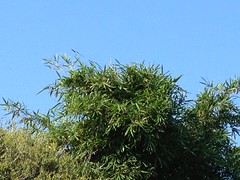- And they won’t stop until supermarkets have a healthy aisle for junk food addicts.
By Rachel Cernansky
Boulder, CO, USA | Tue Mar 16, 2010 02:00 PM ET
Planet Green

READ MORE ABOUT:
Health | Local Food | Nutrition
Future Food star chefs Homaro Cantu and Ben Roche have a science lab in their restaurant. The molecular gastronomists run Moto Restaurant, serving up only the best results of their food-science experiments, which they will keep up until they come up with food creations made from local, vegetable-based ingredients that can replace the ills of modern food production—but without compromising on taste. The self-admitted “junk food fiend” will not stop—eating junk food or experimenting with replacements—until he finds tasty alternatives for all his favorite foods. “If it’s a halfway product, it’s not going to make it,” the chefs told me on the phone, in a conversation about their approach to food and some of the experiments they’ve done at Moto and on Future Food.
Planet Green: Do you cook with any foods that most people do not think of as edible?
In the Miracle Food episode, we tested an all-natural berry—it has almost no calories, and it shrinks certain taste buds so that you can’t taste sour or bitter, you just taste sweet. So you can eat a lemon and just taste lemonade. This berry allows you to take ingredients from the wild that we don’t normally eat—that are not bad for the body, it’s just that they don’t taste good. So you can make a meal out of weeds that grow on your front lawn.
We took a walk one day in the area around the restaurant. We all had our smartphones with us, so we would take a picture of each plant and look up if it’s nontoxic. If it is, then we’ll take the next step and try cooking it or eating it raw, eating it any way we can figure out.
The berry is also good for cancer patients going through chemo—they can often only taste rubber and metallic things, and don’t want to eat. We have fed this to cancer patients and have determined overwhelmingly that this stuff works. There are no negative side effects that we have seen yet. Sugar has no known health benefits—so if you can cut glucose consumption, you’re basically chopping off the leg of diabetes.
PG: I understand you’ve tried to tackle the problem of overfishing from your kitchen?
In an episode on overfishing, we start off in the kitchen. We get our fish delivery, and the quality of fish that we’re getting is not what it used to be. Oceans are being polluted. Fish are getting more expensive and less available. So the next segment is in the lab, we’re trying to create the texture and taste of seafood products out of vegetables. We made a watermelon that looked like a seared tuna loin: we vacuumed different ingredients into the tuna loin, including one called Envision, which cancels out sweetness and makes it taste more savory than it is. We covered it in black and white sesame seeds and froze it in liquid nitrogen.
We did five different fish in a similar vein, and took it to a Japanese fish market, where people really know their seafood—we try and almost fake it, and for the most part people liked it.
PG: How many of your experiments would you say end up on the Moto Restaurant menu?
Probably about half. We do a lot of experiments on the show, things we’re actually doing for the first time, so we kind of rely on people’s reactions for feedback before we make it into a dish that we would serve to paying customers. We get a wide range of reactions to food, and we get to come back to the restaurant and put changes on the menu.
The menu we present to customers is very vague—and it’s actually edible. It looks like you stuck a piece of bread into a printer—we serve it with butter. People go crazy for that: if people are going to have a good time, they can tell right away. If Moto’s not for them, they can tell that also right away.
There are two sides to the bread: one side is a 10-course menu, the other side is a 20-course menu. Each side has every dish written out in vague terms: it will read something like rice and beans, and when a dish comes to table, it’s up to the server to kind of read the table. If people are into the whole mind-bending experience, the waiter will tell them, “this is seared tuna,” and just walk away. The table will either guess that it’s not, or they won’t, and the server will come back and tell them. If the server sees the people are more the type to want to know what’s going on, they’ll tell them. All servers at Moto restaurant are trained chefs, and they have all worked—or do work—in the kitchen. (The ink is a proprietary formula, and we don’t say what it’s made of—except that it’s all local, organic products.)
One dish we kept on the menu for awhile after the show was a scallop dish—it was actually tofu that we made to look like a seared scallop. Before we cooked it, we filled it with a bouillabaisse puree, and when we served it, we filled the plate with other stuff. It was a very tasty dish, it looked and tasted like seafood. It embodied the entire challenge of making seafood from vegetables.
Related Posts:
Five Curious Food Inventions You’ve Never Heard Of
Taste Modulators: How Scientists Are Changing Our Taste in Food
Future Food Comes to Planet Green!









